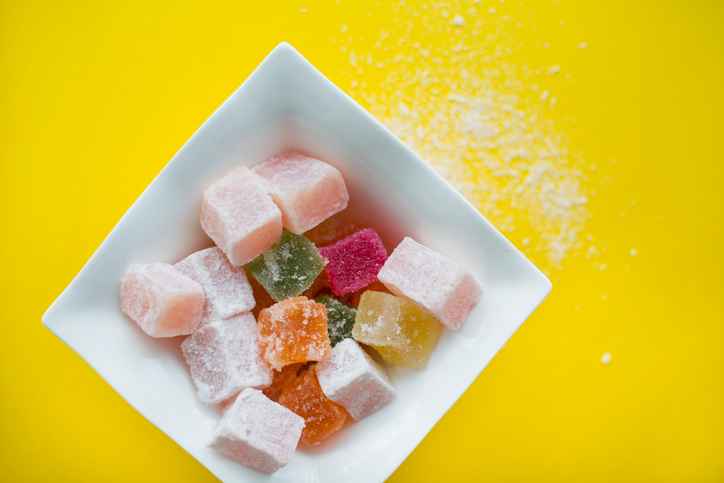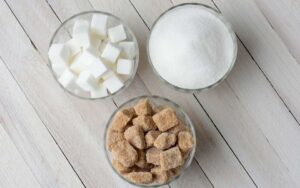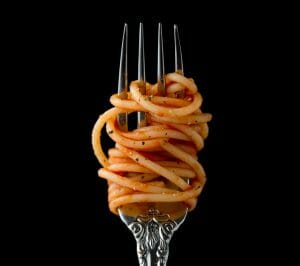Here’s the scoop on sugar: Where it hides and how to cut it out
We all know sugar can be one of the biggest enemies for effective weight loss. Here’s the scoop on sugar (aka the white stuff) and where it hides PLUS how to cut it out.

Here’s the scoop on sugar: Where it hides and how to cut it out
If you are interested in having more energy, sleeping better, improving your general health and losing weight (especially from the stomach area), reducing your sugar intake can have a dramatic impact.
Don’t worry, we’re not suggesting you start obsessively counting grams of sugar. We simply suggest becoming more educated on where sugar might be lurking and then finding healthy and tasty alternatives. It’s added sugar, most notably found in processed foods, or added in cooking that we want to help you reduce.
The key is to reduce your consumption of processed foods and up your wholefood intake. You can get your sugar fix from naturally sweet foods, such as fruit, honey, vegetables and dairy products.
Life is full of birthday parties, catch ups with friends for coffee and cake, events where you have to bring a plate, and a thousand other temptations everywhere you turn. Don’t be daunted!
Our 28 Day Weight Loss Challenge sugar detox meal plans for instance, are not about cutting out all sugar – it’s more about reducing it where you can but still enjoying it when you choose to, mindfully and in the best way to support your weight loss goals.
How Much Sugar Are You Having Each Day?
It’s not just the sugar you might add to your tea that you need to count here. Sugar appears in your jam, muffins, dates, orange juice, sweets, chocolate, muesli bars, plus in savoury foods you might not expect: pizza, pasta sauce, tomato sauce, dips. It all adds up very quickly.
What About Artificial Sweeteners?
At the moment, not a lot is known about the long-term effects of sweeteners such as Splenda or Equal, although there are some worrying studies about the effect of aspartame and sucralose, the main artificial sweeteners. Try your best to give them the flick, as they are highly processed. See if you can retrain your taste buds to enjoy food and drinks without the added sweetness.
How Do You Read Labels To Work Out Sugar Content?

Check out the ‘per 100g’ column on the nutritional information panel, as this will give you the sugar as a percentage of the total product, no matter how much of it you are consuming. As a starting point, 4g of sugar is roughly equivalent to one teaspoon of sugar.
So barbecue sauce generally contains 45.4g of sugar per 100g, which means that 45% of the sauce is sugar. To put it another way, in every tablespoon of barbecue sauce, there are TWO teaspoons of sugar.
Is Sugar Even Added To Healthy Foods?
Sugar is in a significant number of foods that you can buy from the supermarket. Despite having a healthy name, or sporting virtuous health claims, such as ‘contains wholegrains’, ‘fat free’, or ‘extra vitamins and minerals’, the product may still be packed with the white stuff. It may also be full of additives, preservatives, fat and salt.
More On Our Daily Recommended Intake Of Sugar

The current recommendation from the World Health Organisation (WHO) is to reduce “free sugar” intake to less than 10% of a person’s total energy intake, adding that a further reduction to below five per cent would provide further health benefits.
“Free sugars” are defined as simple sugars like glucose, fructose and sucrose, which are added to lots of processed foods, and are naturally present in honey, syrups, fruit juices and fruit juice concentrates.
It is important to:
- Stick to six teaspoons or less of added sugar per day.
- Remember that there are natural sugars in many foods but it’s the “free sugars” – that is, simple sugars (added sugars) – you should be looking out for.
- When a food is in its whole and natural form, like a piece of fruit or full-fat milk, then the other elements in the food balance out the sugar and our bodies can cope with it. So, if a recipe has 20g of sugar in it, but is made with fresh fruit, vegetables, proteins and dairy then the sugars are ones our body can cope with.
Additional Information
For more information related to reducing your sugar intake you may be interested in reading:
What’s The Deal With Sugar, Fruit and The Other ‘F’ Word (Fructose That Is)?
10 Easy Steps To Banish Sugar For Good
‘Sugar. It’s Not Me. It’s you’: Mum Pens Emotional Break Up Letter… From Sugar!
EVERYTHING you need to know about SUGAR!
If you are excited to try making sugar-free treats – check out This Mum Made 140 Sugar-Detox Snacks For Under $50 – That Works Out At SIX Weeks’ Worth Of Snacks!.
Be sure to check out our FREE Sugar Detox guide here.
For more information on our challenge click here.




